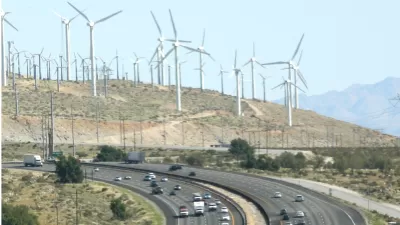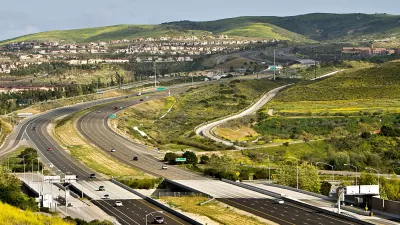In this San Francisco Chronicle Open Forum, Brian Kelly, secretary of the California State Transportation Agency, makes the case that maintenance as well as capital costs be included when financing new infrastructure projects.

State transportation policy makers and elected leaders have made a strong case to increase infrastructure funds, be it through increasing gas taxes and vehicle registration fees, road tolls, sales taxes, and diversions from existing sources of revenue.
However, Secretary Brian Kelly, whose agency overseas oversees the Department of Motor Vehicles, the California Highway Patrol, Caltrans, and high-speed rail, writes that where the money is spent is just as important, if not more, than simply increasing revenues to match current expenses.
"Ribbon-cutting ceremonies may be more exciting than routine maintenance, but it’s unwise to build something new without a commitment to maintain it," writes Kelly. "Fifteen years after building a new road, the pavement will have deteriorated 40 percent and begin to worsen exponentially in the next several years."
We must get smarter about where the money is spent. States, on average, spend about 55 percent of their transportation money on new construction... Building new infrastructure without funding for its upkeep is unsustainable.
The backlog of maintaining streets and roads has contributed to the 59 billion problem of deferred highway and bridge maintenance that Gov. Jerry Brown included as one of his three top infrastructure goals in his January inaugural address.
That’s why the California State Transportation Agency recommends a “fix-it-first” approach to transportation infrastructure that prioritizes the preservation of our existing highway system.
A similar case was made in an opinion in The Sacramento Bee last month by Ethan N. Elkind, Associate Director of the Climate Change and Business Research Initiative at the UCLA School of Law’s Emmett Institute on Climate Change and the Environment and UC Berkeley School of Law’s Center for Law, Energy & the Environment (CLEE).
Every year, the state, regional agencies and local governments spend about $28 billion [on California's transportation infrastructure]. But are we spending that money effectively?
He goes on to make the same case that Kelly makes about how capital projects receive the most attention, but he applies it to the regional and local levels as well. He refers readers to his February 2105 study, "MOVING DOLLARS: Aligning Transportation Spending With California’s Environmental Goals" [PDF].
Correspondent's note: The URL provided for this article will hopefully provide free access to the op-ed as it may otherwise require a subscription.
FULL STORY: Road funding must include construction and maintenance costs

Planetizen Federal Action Tracker
A weekly monitor of how Trump’s orders and actions are impacting planners and planning in America.

Maui's Vacation Rental Debate Turns Ugly
Verbal attacks, misinformation campaigns and fistfights plague a high-stakes debate to convert thousands of vacation rentals into long-term housing.

Restaurant Patios Were a Pandemic Win — Why Were They so Hard to Keep?
Social distancing requirements and changes in travel patterns prompted cities to pilot new uses for street and sidewalk space. Then it got complicated.

In California Battle of Housing vs. Environment, Housing Just Won
A new state law significantly limits the power of CEQA, an environmental review law that served as a powerful tool for blocking new development.

Boulder Eliminates Parking Minimums Citywide
Officials estimate the cost of building a single underground parking space at up to $100,000.

Orange County, Florida Adopts Largest US “Sprawl Repair” Code
The ‘Orange Code’ seeks to rectify decades of sprawl-inducing, car-oriented development.
Urban Design for Planners 1: Software Tools
This six-course series explores essential urban design concepts using open source software and equips planners with the tools they need to participate fully in the urban design process.
Planning for Universal Design
Learn the tools for implementing Universal Design in planning regulations.
Heyer Gruel & Associates PA
JM Goldson LLC
Custer County Colorado
City of Camden Redevelopment Agency
City of Astoria
Transportation Research & Education Center (TREC) at Portland State University
Jefferson Parish Government
Camden Redevelopment Agency
City of Claremont




























